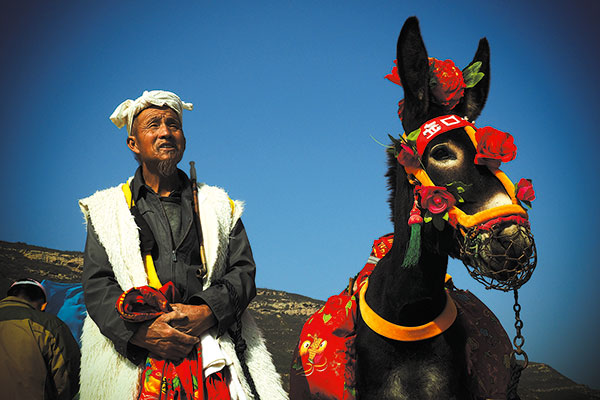
With diverse local customs and a rich cultural heritage, Linfen county in Shanxi province has all of the charms of China’s golden eras. Hukou Waterfall in Linfen is the most spectacular scene along the Yellow River.[Photo/Provided to China Daily]
The once soot-blackened city of Linfen county is unknown to most people and those who have heard of it know it for all the wrong reasons.
As the heart of China’s coal industry, Linfen was ranked as one of the most polluted cities on earth.
It was named as the most uninhabitable place in the world in 2006.
After years shrouded in pollution, the city in the southwest of Shanxi province cleaned up its act.
Now it is trying to shake off its murky image and show the world it has more to offer than mines and smog.
The Fen River runs through Linfen and used to be piled high with rubbish.
It was avoided by residents who scuttled about wearing masks to prevent choking on coal dust and fumes.
A visit to the river today could not be more different.
A major part of the city’s efforts to reduce pollution focused on the river and included creating two river parks, which are genuinely valued and well used by locals.
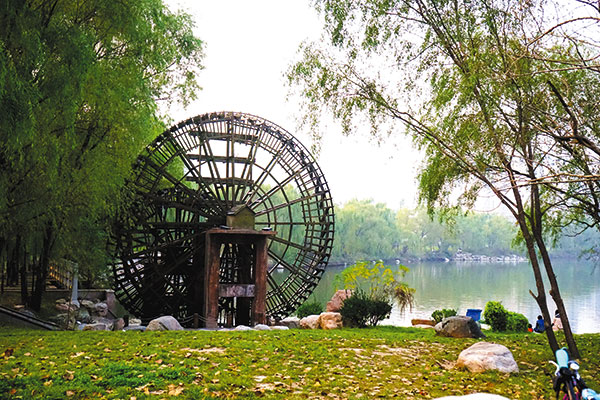
Natural beauty and cultural diversity are common sights in Linfen.[Photo/Provided to China Daily]
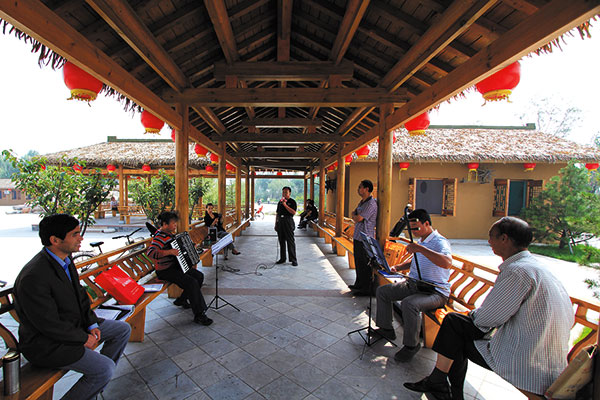
Natural beauty and cultural diversity are common sights in Linfen.[Photo/Provided to China Daily]

Natural beauty and cultural diversity are common sights in Linfen.[Photo/Provided to China Daily]
In the west of the city the Fen River Park, which was completed in May 2009, is a hive of activity throughout the day.
During an early morning run I spotted children walking their dogs, people practicing tai chi and the outdoor exercise area was as packed as a modern city gym during peak hours.
At lunchtime office workers played games, and in the evening ladies danced while photographers captured reflections in the water.
The park is dotted with more than 150 scenic spots that feature typical buildings from the Ming and Qing dynasties (1368-1911).
On the east side of Linfen the Laoju River Park is still under construction but when complete is due to be even bigger than the 16.5 square kilometer Fen River Park.
The river parks were part of the city’s wider industrial transformation plans, which included measures to change its industrial structure and economic development.
Diversified industrial parks were set up and the city aimed to create an urban-rural balance to foster a better environment for residents.
Overall, the city’s coal-based economy may have suffered but its environment has improved dramatically.
It changed much so that Linfen has been listed as a model city for environmental protection in Shanxi province.
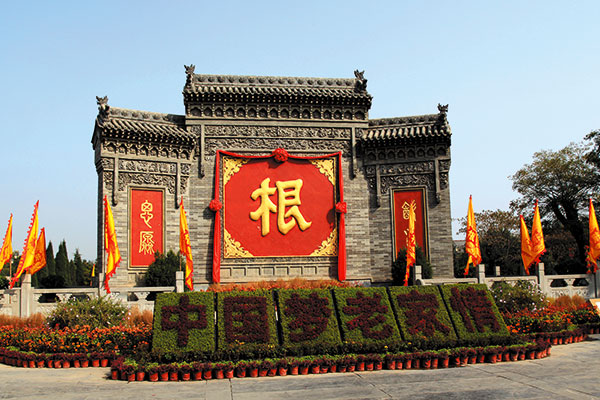
The Hongtong Root Ceremony Park is where local people make sacrifices to their ancestors.[Photo/Provided to China Daily]
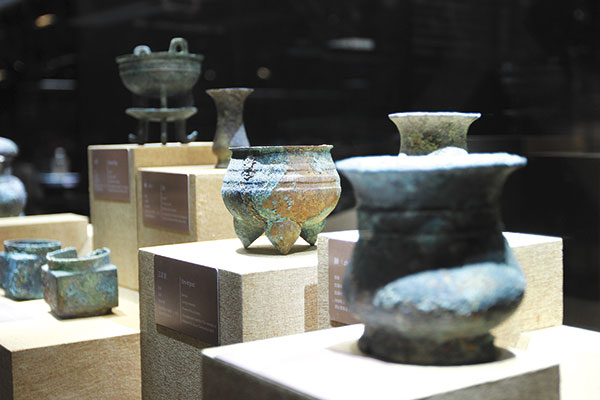
Cultural relics at the Jin Dynasty Museum.[Photo/Provided to China Daily]
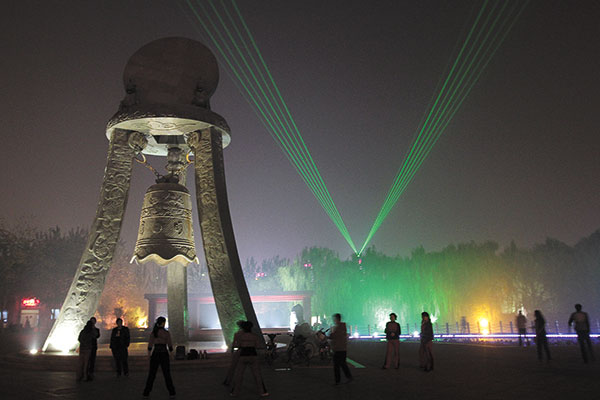
The night view at the Fen River Park.[Photo/Provided to China Daily]
ATTRACTIONS
Tourists and history buffs in a rush to get to neighbouring Xi’an and the Terracotta Warriors often overlook Linfen, which is a historically important city in its own right.
The city was the capital of Yao, the fourth of five legendary Chinese emperors who ruled more than 4,000 years ago, and is home to several of China’s household names including Lin Xiangru, a politician during the Warring States Period (475-221 BC) and Wei Qing, a general in the Western Han Dynasty (206 BC-AD 24).
Linfen has more than 3,000 relic protection sites and 140,000 relics. The Jin Kingdom Museum in Quwo county displays ancient marquis tombs, some of which were excavated as recently as 2001.
For history enthusiasts looking to go a little deeper and avoid crowds, Linfen could be the ideal destination.
A visit to the Ding Village in Xiangfen county is like traveling back in time. More than 40 ancient houses, built between 1593 and just before the People’s Republic of China was founded, showcase typical architecture and how people lived.
The yellow and green octagonal 13-floor Feihong Pagoda in Guangsheng Temple survived a magnitude 8.0 earthquake in 1695 and is considered to be the most beautiful and best-preserved pagoda in China.
The Yao tomb and temple, which dates back more than 1,300 years and hosts annual temple fairs, is a popular site for people to offer sacrifices to their ancestors, while the Old Locust Tree in Hongtong county is also a must-see.
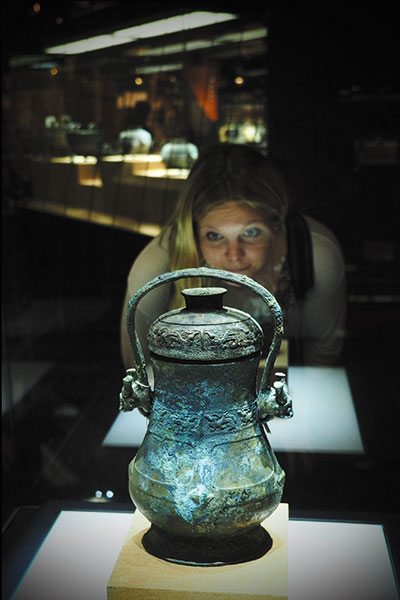
Bronze vessels are displayed in Jin Dynasty Museum[Photo/Provided to China Daily]

Feihong Pagoda in Guangsheng Temple[Photo/Provided to China Daily]

Ding Village in Xiangfen county[Photo/Provided to China Daily]
GOLDEN WONDER
A bumpy bus ride out of the city takes visitors to what is undeniably Linfen’s star attraction-the Hukou Waterfall. This is the second-largest waterfall in China and the largest yellow waterfall in the world.
The middle reaches of the Yellow River flow through the Jinxia Grand Canyon and cascade over rocks, throwing up a spray that creates a stunning rainbow over the waterfall.
Visitors can climb down closer to water level and stoop in the cold damp Dragon Cave while the roaring water goes past.
Across the waterfall, just a stone’s throw away, lies neighboring Shaanxi province (which has one more “a” than Shanxi), home to historical Xi’an, which sometimes somewhat unfairly overshadows Linfen.
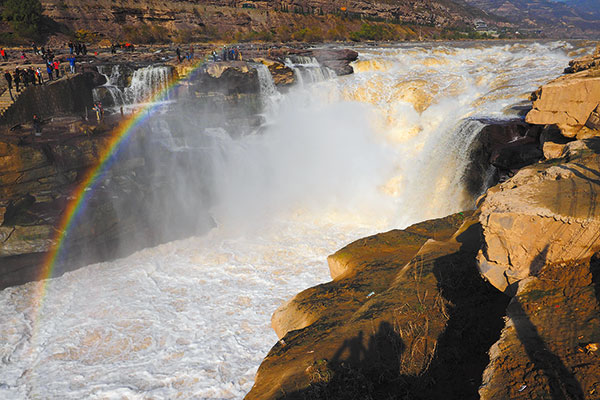
The Hukou Waterfall[Photo/Provided to China Daily]
